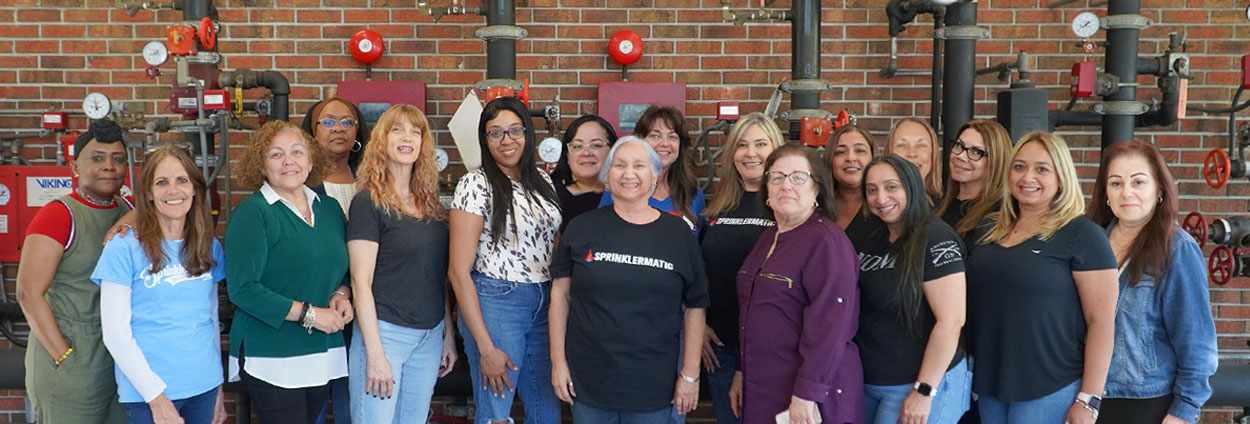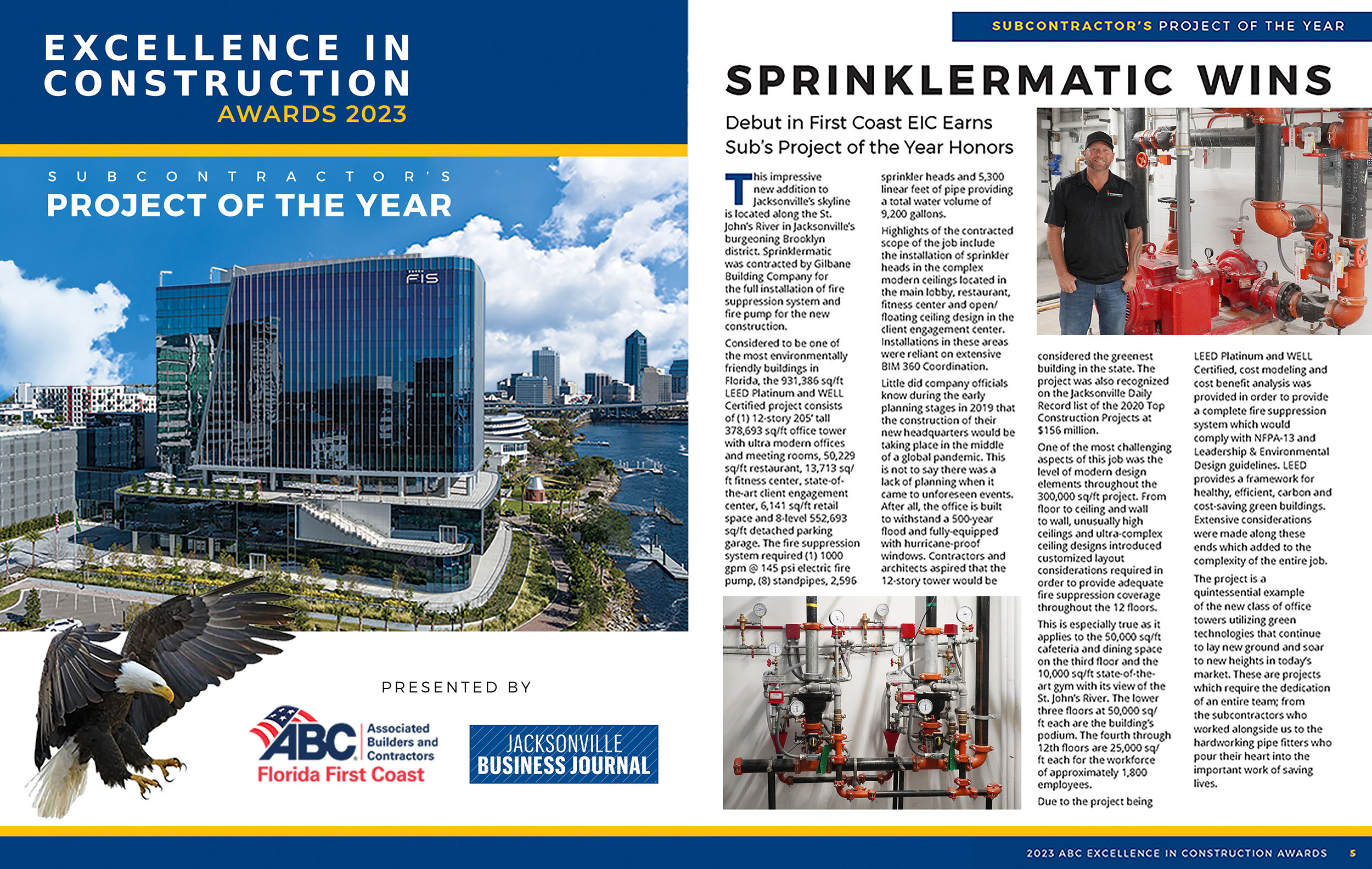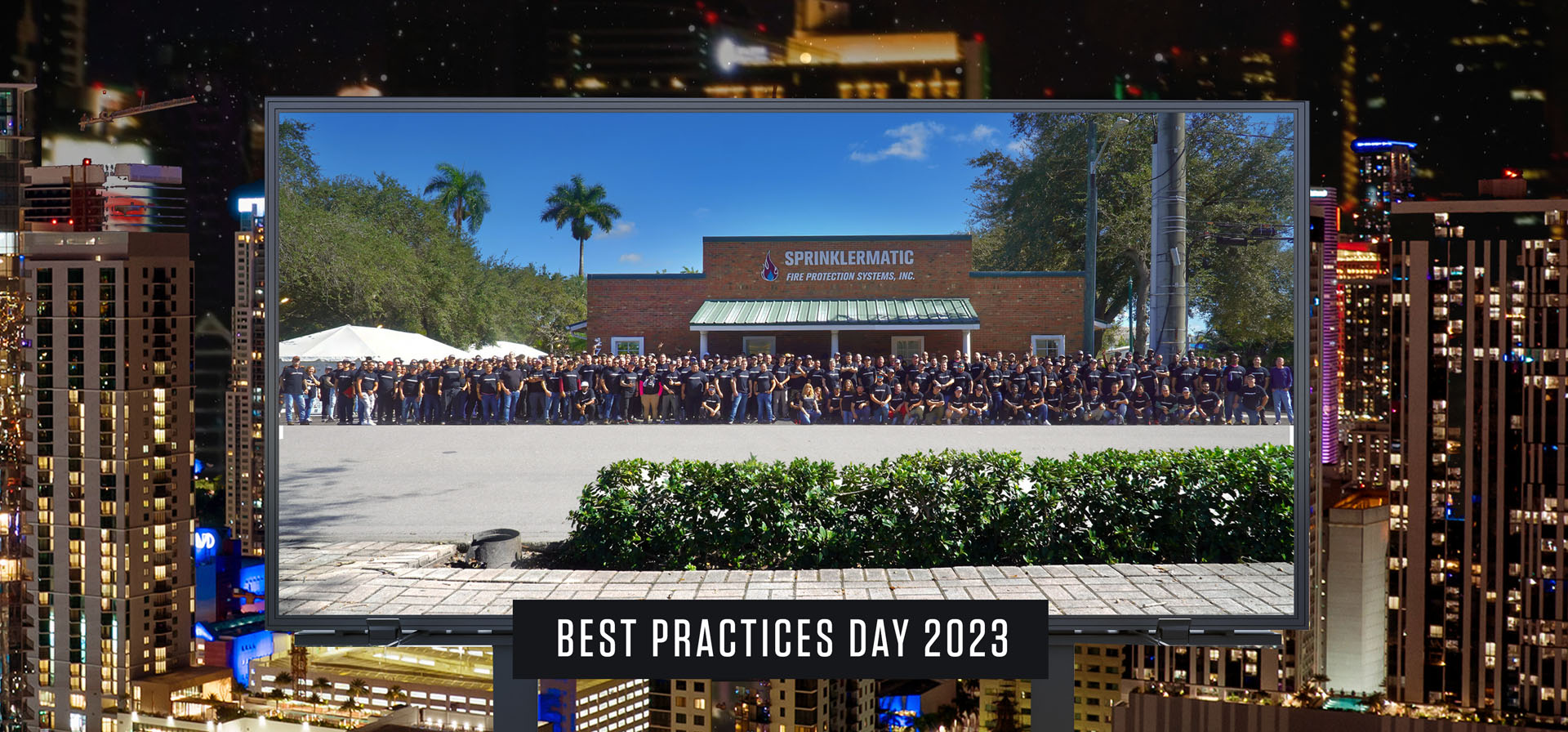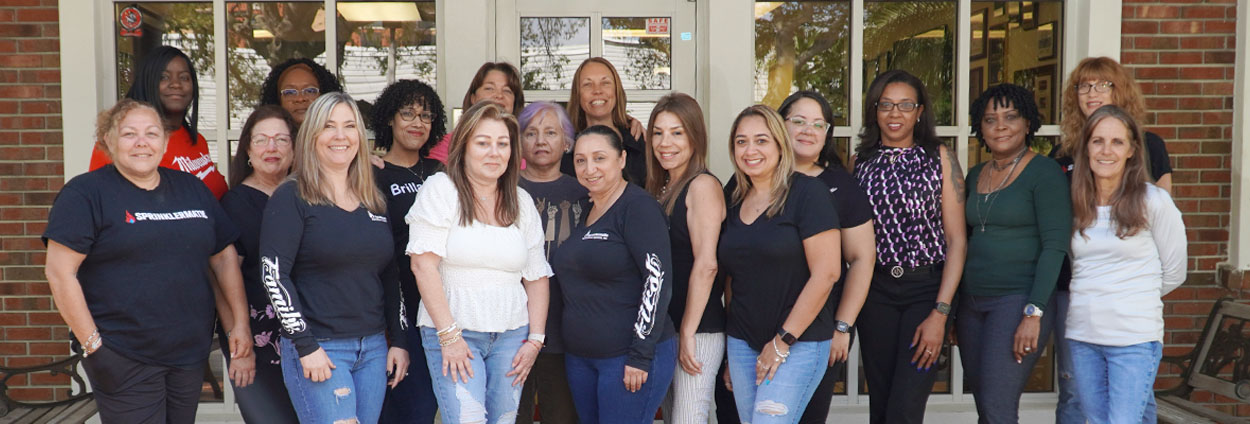Connecting the Disconnect: Miami-Dade Fire/Rescue Alliance With Sprinklermatic
By Captain Bill Gustin, Lead Instructor Miami-Dade Fire Department Training & Safety Division and Guest Instructor at Sprinklermatic University: bill@gustinfiretraining.com
A fire on the stove spreads to the kitchen cabinets in an apartment on the 15th floor of a thirty-story building. Within moments the fire is extinguished with one residential sprinkler head. The sprinkler system performed exactly as it was designed to do; within 90 seconds of sprinkler activation a water flow alarm is initiated and transmitted to a central station fire alarm facility which notifies the fire department.
Upon arrival, firefighters check the fire alarm system’s annunciator panel which is indicating “water flow; 15th floor” on its display. Firefighters gain control of the elevators and ascend to the 13th floor; two floors below the reported fire floor as required by department procedures. Once firefighters reach the apartment, they find the fire extinguished but with an open sprinkler head still flowing 25 gallons per minute. Frantically they search for a valve to shut down the flow of water.
Listening to desperate radio transmissions, an engine company driver-engineer transmits that he has found the valve to shut down the sprinkler system; a post-indicator valve (PIV) on the sidewalk in front of the building.
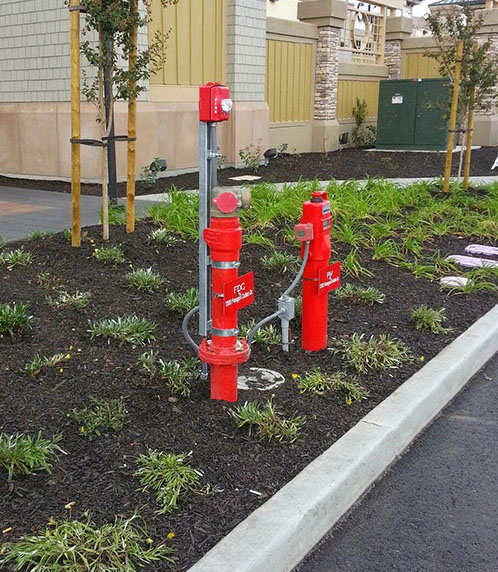
What he does not know is that closing the PIV will shut off the water supply to the building’s diesel fire pump causing the pump and its diesel driver to overheat and self-destruct.
Firefighters also do not realize that there are 15 floors of water column above them that, under gravity pressure, continues to flow water out of the open sprinkler head; making its way into an electric meter room and elevator hoist way; causing water to short circuit the hoist way door interlocks, rendering the elevators out of service. To make matters worse, water entering the meter room flows into bus ducts and shorts out electrical panels.
A SERIOUS LACK OF TRAINING
How did this comedy of errors occur? How is it possible that so-called “professional” firefighters know so little about how to locate and operate sprinkler zone/floor isolation valves and how to open a valve to drain the water remaining in the sprinkler piping between the closed isolation valve and the open sprinkler head?
The preceding scenario is not a fantasy; it happens all the time because there is a disconnect between fire suppression system contractors, fire department fire prevention personnel and fire suppression personnel. Today’s fire departments are “all hazard” agencies, responding to medical emergencies, hazardous material leaks and spills vehicles under water, vehicle and machinery entrapments and unfortunately, active shooters. Today’s firefighter must be a “jack of all trades”, a medic, a psychologist and skilled in hazardous materials and technical rescue. With such a wide array of disciplines, firefighters that respond to calls involving fire alarm and suppression systems receive very little training on how to operate with them. Whose fault is it?
I believe it is the fire suppression personnel’s fault for not reaching out to their brothers and sisters in their fire prevention bureau for advice and training in suppression and alarm systems. I have been a firefighter with Miami-Dade Fire/Rescue for 42 years and, up until my recent transfer to our Training Division, spent my career responding to emergencies.
A STEEP & HUMBLE LEARNING CURVE
A building is never more vulnerable than when it is under construction. As fire officers we make it our business to pre-fire plan buildings under construction and existing buildings as well. During one of my walk-throughs I met a young man who was a superintendent for a fire suppression contractor; it was the beginning of a wonderful friendship and the upward spike in my learning curve about suppression and alarm systems. This young man has had a huge influence in my career as did my Dad; a “fireman’s fireman.”

When my Dad was promoted to the rank of Lieutenant on the Chicago Fire Department, he was immediately transferred to the fire prevention bureau. My Dad missed the excitement of firefighting but, in retrospect, he told me time he spent in the “Bureau” made him a much better fire officer. This inspired me to reach out to our folks in Fire Prevention who are very familiar with suppression and alarm systems. In reaching out I was blessed to have met a plans examiner in our department’s fire prevention bureau that hung sprinkler piping for 33 years. Learning about systems from professionals who know their business has definitely taken me out of my comfort zone when I realized how much I had to learn.
SPRINKLERMATIC UNIVERSITY
My friend in plans review told me about a training facility at Sprinklermatic, a major fire suppression contractor in the state. The facility was amazing; with a wide array of risers, valves and sprinkler heads that can actually flow controlled by solenoid valves. Every training prop at the facility functions because they are supplied by a diesel fire pump, complete with a functioning controller and jockey pump. When my fellow training officers and I first visited the facility, it was with the intention of duplicating it at Miami-Dade’s Fire Training Center. Our intentions, however, changed when we met Sprinklermatic’s president, Mr. Robin Collier, who assured us that we could conduct training at his facility.
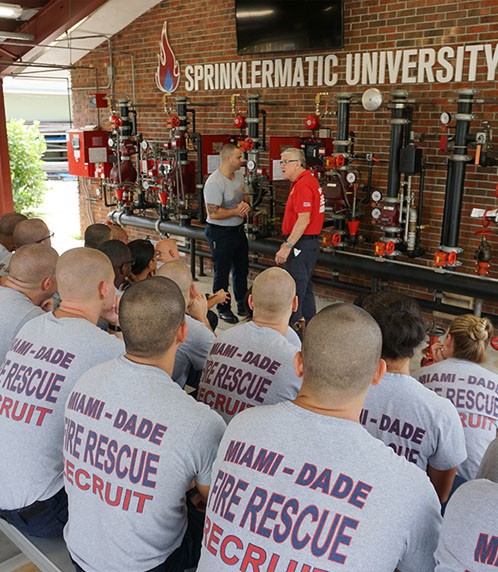
I am very proud to say that suppression system training at Sprinklermatic University is now in Miami-Dade’s recruit training and officer development program curriculums as well as several other fire departments in Southeast Florida. Sprinklermatic, remarkably also offers training for continuing education units approved by the State Of Florida.
Sprinklermatic is expanding throughout the State and so is Sprinklermatic University; with one operating in the Tampa area and plans to build similar universities in the Orlando, Ft. Myers and Jacksonville areas.
LASTING FRIENDSHIPS BASED ON MUTUAL RESPECT
A wonderful by product of our alliance with Sprinklermatic is lasting friendships forged between firefighters and suppression system technicians; friendships based on mutual respect for the roles we both play and protecting lives and property from fire. When I introduce our firefighters to Sprinklermatic personnel, I (tongue in cheek) caution them to never challenge a sprinkler fitter to an arm wrestling contest because, after years of working with massive pipe wrenches over their heads, the fitters are sure to win.
Captain Bill Gustin is a 47-Year Fire Service Veteran and Lead Instructor for the Miami-Dade Fire Department Training & Safety Division. Gustin currently serves on the editorial board and is a technical advisor for Fire Engineering Magazine. He began his fire service career in the Chicago area and teaches fire training programs in Florida and other states. Visit www.gustinfiretraining.com or email bill@gustinfiretraining.com for more information.


